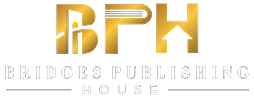Publishing advice is everywhere, but most of it is wrong. Well-meaning writers share outdated information that actually hurts more than it helps. These myths spread like wildfire through writing communities, keeping talented authors stuck in cycles of frustration and failure.
Let’s destroy the five biggest lies sabotaging your publishing career right now.
Myth 1: You Need an Agent to Get Published
This myth comes from the old publishing world, where agents were the only gatekeepers to major publishers. Today, thousands of authors make six-figure incomes without ever meeting an agent. Self-publishing platforms give you direct access to readers worldwide. Hybrid publishers work with authors directly. Small presses often accept unagented submissions.
Yes, agents can be helpful for specific career paths, but they’re not mandatory for success. Some genres, like romance and thriller, do exceptionally well in self-publishing. Many authors who started independently later attracted agents because of their proven sales records.
Myth 2: Self-Published Books Are of Lower Quality
This stereotype died years ago, but people keep repeating it. Self-published authors often have more resources for professional editing, cover design, and marketing than traditionally published midlist authors. They control their timelines and can invest in quality without corporate budget constraints.
Readers don’t care about your publishing path. They care about good stories and valuable content. Some of the best books on the market today come from independent authors who took control of their quality standards.
Myth 3: You Need Thousands of Followers Before Publishing
Social media followers don’t automatically translate to book sales. Authors with 50,000 Instagram followers sometimes sell fewer books than authors with 500 engaged email subscribers. Platform size matters far less than platform engagement and targeting.
You can successfully launch a book with a small but passionate audience. Focus on building genuine connections with people who actually read your genre. Quality beats quantity every single time in publishing.
Myth 4: Publishers Handle All the Marketing
Even traditionally published authors do most of their marketing. Publishers provide some promotional support but expect authors to be active partners in selling their books. The days of publishers spending big money to market unknown authors are mostly gone.
This myth keeps authors unprepared for the reality of book promotion. Whether you self-publish or work with a publisher, you need marketing skills. Start learning now, not after your book comes out.
Myth 5: Writing More Books Always Increases Income
Publishing 50 mediocre books won’t make you successful. Readers remember bad experiences and avoid authors who disappointed them. One excellent book that connects with readers often outsells a dozen rushed, poorly executed books.
Focus on making each book the best it can be. Build a reputation for quality. Satisfied readers buy your future books and recommend you to friends. This creates sustainable, long-term success instead of short-term volume that damages your brand.
These myths persist because they make publishing seem either impossible or too easy. The truth is more nuanced. Success requires understanding how the industry actually works today, not how it worked twenty years ago.
The Bottom Line
Stop letting outdated advice hold you back. Question everything you hear about publishing. Research current market conditions. Talk to authors who are succeeding now, not those who had their heyday decades ago.
The publishing world offers more opportunities than ever before, but only if you operate with accurate information. These myths have probably already cost you time, money, and motivation. Don’t let them steal another day of your writing career.
Your success depends on seeing publishing clearly, not through the lens of myths that no longer apply to today’s market.






